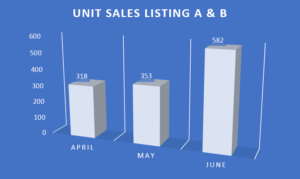Which Order Fulfillment Method is Right for you?
Fulfillment is the process of receiving and storing inventory before picking, packing, and shipping orders to online shoppers. Fulfillment must be done efficiently to avoid having problems and increase customer trust in your store. Customers expect dependable delivery and fast shipping from ecommerce retailers.
Fulfillment is a key business operation in ecommerce. It involves the following steps:
- Receive Inventory
These are items that business owners ordered from another country, third party, another warehouse, and other sources.
- Inventory Management
Incoming inventory must be inspected and counted to be included in the inventory. This is to maintain quality and to ensure that the correct quantity of products ordered has been delivered.
- Inventory Storage
Items are then added to the inventory database and assigned a barcode or SKU for easy retrieval. They are stored in-house or sent to different warehouses.
- Order Processing
An order management software can be integrated to automatically facilitate order processing. How items are picked and packed depends on each customer’s order.
- Picking
The packing slip contains important information like color, size, quantity, item SKU and location of item in the warehouse. The picking team or automated warehouse robot selects the ordered items according to the packing slip’s instructions.
- Packing
Packing materials are selected to achieve the most practical dimensional weight. Optimizing dimensional weight is important to maximize space in the delivery truck and can potentially lower shipment costs.
- Shipping
The packed item is sent to a shipper or carrier to be shipped to the customer. They can be sent thru freight lines, airlines, UPS, FedEx, UPS and other carriers.
- Delivery
It is common to include more than one carrier for shipping, this shipping practice is used especially for overseas and hard to reach areas. Delivery includes leaving the package on the front porch, handing over the package to the customer, a representative, a PO Box, and other means.
- Return/Exchange Processing
The return process starts with including the original customer’s ordered product, shipping materials and a return label. The customer returns the product for an exchange or refund. Return processing includes quality control check to determine if the product is fit to be restocked and sorted.
Common e-commerce fulfillment options
There are various fulfillment models that business owners opt for, these options are based on the scale of their business operations, size of inventory, manpower, availability of storage space, budget and many other factors.
In-house Fulfillment
This type of fulfillment is frequently used by small business owners, in-house fulfillment stores and ships orders from your place of business.
Storing and shipping orders from your place of business is a common approach for smaller brands.
In-house fulfillment is ideal for you if you:
- Sell a small number of products
- Have a low start up budget
- Have a working distribution system
- Sell products that have complicated logistics and distribution requirements
- Want to control the entire fulfillment process
- Sell seasonal items that would incur high storage costs
Some of the disadvantages of using this type of fulfillment are:
- Limited manpower
- Can restrict the variety and quantity of goods you can store and sell
- Raised overhead cost
- No shipping discounts for customers
- Time consuming
- Limited storage space
- Difficult to scale
Third-party Fulfillment (3PL)
Ecommerce retailers who lack the means to store, pack, and ship inventory by themselves will benefit from outsourcing to a Third-Party Fulfillment company or 3PL. You not only free up time and resources by outsourcing the entire fulfillment process; you also allow your team to focus on things like marketing and business development.
3PL companies manages the different functions of supply chain, such as:
- Sourcing transportation
- Inventory management and storage
- Freight forwarding
- Shipping and receiving
- Distribution
- Customs brokerage
- Pick and pack
- Cross-docking
The benefits of using 3PL are:
- Operating costs are reduced – many 3PL companies offer flexible pricing plans that can be customized according to the business owner’s warehouse needs.
- Expertise from years of experience – it eliminates the need to hire people who require onboarding and training. Leverage the expertise from years of experience to run your fulfillment process smoothly.
- Purchasing power – 3PLs have an established supplier relationship to secure cost-effective solutions for their clients.
- Access to a vast resource network – major 3PLs have a vast network of interconnected routes that allow them to maximize efficiency while transporting their clients’ cargo. They make good use of this network and have a solid understanding of alternative routes and strategies when unexpected issues arise.
- Optimized inventory management – majority of third-party logistics providers include inventory tracking and management software that integrates seamlessly with your existing sales platform. This can include real-time inventory tracking, which delivers the most accurate view of your orders.
- Easy to scale – one of the primary benefits of a 3PL is the versatility in business scale. If your company experiences a big surge, you will be prepared to deal with increased orders and storage. Similarly, if your sales fall, you won’t have to worry about your investments going to waste.
Disadvantages:
- Less control – 3PL companies have the final say in the decision making over the supply chain operation.
- Expensive upfront costs – Getting started with a 3PL provider can involve upfront costs to launch the service
- Communication problems – you may risk sacrificing your company’s reputation and customer service especially when it comes to delays and other issues related to shipping.
Dropshipping
Dropshipping involves outsourcing the whole or a portion of the supply chain process, from product sourcing or manufacturing to fulfillment. Manufacturing, storage, shipping, and delivery of products to customers can all be managed by a manufacturer or a third party.
Some sellers prefer this option because it reduces overhead cost. You are in charge of marketing and other business operations, while another service provider is responsible for the physical goods, including fulfillment.
The benefits of dropshipping are:
- Low startup capital – It is possible to launch a business without having to invest thousands of dollars. Once a dropshipper has found a supplier, the business can start.
- Low risk – You can test a product and move on to the next without having to spend money on inventory and storage.
- Easy to start – Running a dropshipping business is easier and you won’t have to worry about storage space, picking and packing of order, tracking inventory, inbound shipment, and handling returns.
- Low overhead cost – Expenses need to run a business are relatively low since there is no need to purchase inventory or manage a warehouse.
- Able to sell a wide selection of products – The seller can offer an array of products without worrying about pre purchasing inventory.
- Scalable and flexible – You can add more suppliers as your business grows and you can work at the comfort of your own home.
- Easy to test – Dropshipping is a good way to test out products and have an idea if it will sell in the market.
Disadvantages:
- Low profit margin – your profits will be lower as the original price of the item has already been adjusted by the supplier to make a profit. Raising the price of the item to have bigger profits can be a disadvantage because customers these days are tech savvy and will search for lower priced options.
- Inventory issues – because you rely on your supplier’s stocks, if they run out of stock, you, in turn, runs out of stock
- High Competition – a lot of people are selling the same products using the same suppliers, this can pose as a potential problem especially if the competition chooses to have very, very low markups
- Complicated order processing – customers who order multiple items, may receive their orders in different packages, this is usually when items will come from different suppliers
- Supplier errors – since the order will be shipped from the supplier, you cannot assure that the items will always be in good condition. You will only learn about this if the customer complains and asks for a refund, requests for an exchange or a replacement.
- Less control – sellers do not have control over shipping times, package design, and they cannot personalize orders according to the customer’s specifications
Hybrid
Hybrid type of fulfillment is the combination of two or more fulfillment methods. An example is, when a business owner offers customization for some items, they keep their customizable products in house and outsource fulfillment for their other products.
Helpful Tips to Improve Order Fulfillment
- Invest in a tried and tested ERP fulfillment system
- Organize your receiving process to facilitate easy processing of incoming shipments. Streamlining this process helps ensure that goods are stored swiftly and damaged items are returned.
- Organize your warehouse or storage area. Strategically organizing your items according to demand minimizes the need for your pickers to go back and forth, thus saving time and energy. Place low selling items at the back and high demand items upfront.
- Have a backup plan. Holidays and big sale days can cause problems with carriers. You must be able to think of another shipping strategy in case of shipping issues from your main carrier.
- Communicate with customers and set clear expectations. If there will be anticipated delays, make sure to reach out to the customer to inform them about the delay to let them know what to expect.
- Prepare for complains and returns. This is an unavoidable part of business. There will be delays, shipping issues, defects and errors along the way. What is more important is to prepare for these scenarios and have a plan on how to make things right.
Final Thoughts
The best fulfillment plan depends on each business owners’ needs and resources. As a business owner, it is essential to know about the different types of fulfillment to be able to gauge which of these models will be perfect for your business. Efficient and reliable ecommerce fulfillment elevates the reputation of your business and helps gain your customers’ trust.






